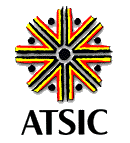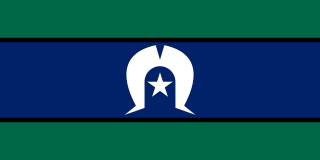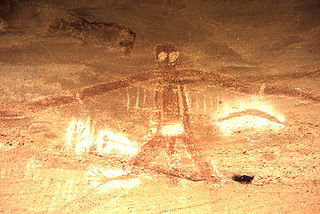| Statutory authority overview | |
|---|---|
| Formed | 1 June 1995 |
| Jurisdiction | Australia |
| Headquarters | Adelaide, South Australia |
| Employees | 274 (as at 30 June 2015) |
| Annual budget | A$118 million (2015) [1] |
| Minister responsible | |
| Statutory authority executives |
|
| Parent department | Department of the Prime Minister and Cabinet |
| Child agencies |
|
| Key documents |
|
| Website | www.ilsc.gov.au |
The Indigenous Land and Sea Corporation (ILSC) is an Australian federal government statutory authority with national responsibilities to assist Aboriginal and Torres Strait Islander people to acquire land and to manage assets to achieve cultural, social, environmental and economic benefits for Indigenous peoples and future generations. It was established as the Indigenous Land Corporation (ILC) following the enactment of the Native Title Act 1993 .
The Corporation owns several subsidiary businesses, including Voyages Indigenous Tourism Australia, National Indigenous Pastoral Enterprises (NIPE), and the National Centre of Indigenous Excellence.
The Indigenous Land Corporation was established under the Land Fund and Indigenous Land Corporation (ATSIC Amendment) Act 1995. [2] in 1993–4, following the passing of the Native Title Act 1993. [3] [4]
In 2008 the ILC rolled out its Training to Employment (T2E) program, which was renamed "Our Land Our Jobs" in 2015. [5]
In 2015 Tricia Button became the first Aboriginal woman to be Deputy CEO of the organisation; [5] later known as Tricia Stroud, she was Chief Operating Officer as of 2021.
On 1 February 2019 the name of the Indigenous Land Corporation was changed to Indigenous Land and Sea Corporation, with its remit extended to cover waters as well as land. In that year it created the Agribusiness Investment Program, to provide funding for Indigenous agricultural enterprises. [5]
The ILSC has a seven-member board, appointed by the Minister for Indigenous Affairs. The Chairperson and at least four other members of the Board must be Indigenous. The ILSC Board makes all policy and land acquisition decisions. The ILC was formed following the Mabo decision, which first recognised native title in Australia and the prior ownership of land by Indigenous people, rejecting the doctrine of terra nullius . [3]
As of October 2021 [update] , Joe Morrison is CEO and Tricia Stroud is Chief Operating Officer. [6]
The ILSC was established pursuant to the Land Fund and Indigenous Land Corporation (ATSIC Amendment) Act 1995. [2] that allocated an indexed sum of A$121 million from the Australian Government to the ILC over a period of ten years to 30 June 2004. Since June 2004, the ILSC has been self-sufficient. In the preceding ten years, one third of allocations could be allotted towards funding ongoing activities. [3]
The ILSC is now regulated by the Aboriginal and Torres Strait Islander Act 2005. [7]
The ILSC has acquired a number of assets, some of which are run as stand-alone subsidiary businesses, including Voyages Indigenous Tourism Australia (known as Voyages), National Indigenous Pastoral Enterprises (NIPE [8] ), and the National Centre of Indigenous Excellence (NCIE). [1]
The NCIE was established in 2006 and is located in Redfern in Sydney. [9] It was partly in response to the 2004 Redfern riots, with the intention of improving the long-term well-being of the Redfern community. It was created on the site of the Redfern Public School after it was acquired by the ILSC. [10]
As of 2012, Jason Glanville was the Chief Executive Officer of NCIE. [11] In 2015, Kirstie Parker was appointed CEO. [12] As of October 2021 [update] Darren Hammond was CEO. [13] It offers sports, fitness, conferences and community classes which include educational support for Aboriginal and Torres Strait Islander people. The centre is also home to several diversion and youth programs which are run in collaboration with local police. In mid-2022 there were around 50 employees, mostly Indigenous. [14] Other users of the gym and sporting facilities include NRL players from the Rabbitohs, the governor-general, and members of the air force. The centre provides after-school care, programs for jobseekers, a variety of classes in health and cultural topics, and swimming lessons for all ages. [10]
In early August 2022 it was announced that the NCIE would be closed from 8 August 2022, after the ILSC and new owners of the site since 30 June, the New South Wales Aboriginal Land Council (NSWALC), could not agree on ongoing support for the centre. [14] However, after staff and community members had protested for five days, Linda Burney, the federal Minister for Indigenous Australians, and Environment Minister Tanya Plibersek intervened.Burney said that the centre must stay open, and that the ILSC and NSWALC had a week to come to an agreement. [15] Although the centre had accumulated a large debt, but the first social return on investment (SROI) report found that NCIE created three times the value for members of the community, dollar for dollar. [10]
Following its 2010 acquisition by the ILC, [5] Voyages established the National Indigenous Training Academy at Yulara, Northern Territory (Ayers Rock Resort) to provide young Indigenous people with accredited training in hospitality, and the resort significantly increased its level of Indigenous staff from 1 per cent of the workforce at time of acquisition to approximately 32 per cent of the workforce in 2015. [16]
The National Indigenous Pastoral Enterprises was established in 2014, [17] and a year later became a fully-functioning subsidiary, [5] with 246 Aboriginal employees, which was about 72 per cent of the workforce. [17]

The Aboriginal and Torres Strait Islander Commission (ATSIC) (1990–2005) was the Australian Government body through which Aboriginal Australians and Torres Strait Islanders were formally involved in the processes of government affecting their lives, established under the Hawke government in 1990. A number of Indigenous programs and organisations fell under the overall umbrella of ATSIC.

Lowitja Lois O'Donoghue Smart, is an Aboriginal Australian retired public administrator. In 1990-1996 she was the inaugural chairperson of the Aboriginal and Torres Strait Islander Commission (ATSIC). She is patron of the Lowitja Institute, a research institute for Aboriginal & Torres Strait Islander health and wellbeing.

The Torres Strait Islander Flag is an official flag of Australia, and is the flag that represents Torres Strait Islander people. It was designed in 1992 by Bernard Namok. It won a local competition held by the Islands Coordinating Council, and was recognised by the Aboriginal and Torres Strait Islander Commission in June 1992.
Aboriginal and Torres Strait Islander Services was part of the now disbanded Aboriginal and Torres Strait Islander Commission (ATSIC).
An outstation, homeland or homeland community is a very small, often remote, permanent community of Aboriginal Australian people connected by kinship, on land that often, but not always, has social, cultural or economic significance to them, as traditional land. The outstation movement or homeland movement refers to the voluntary relocation of Aboriginal people from towns to these locations.
Indigenous Australian self-determination, also known as Aboriginal Australian self-determination, is the power relating to self-governance by Aboriginal and Torres Strait Islander peoples in Australia. It is the right of Aboriginal and Torres Strait Islander peoples to determine their own political status and pursue their own economic, social and cultural interests. Self-determination asserts that Aboriginal and Torres Strait Islander peoples should direct and implement Aboriginal and Torres Strait Islander policy formulation and provision of services. Self-determination encompasses both Aboriginal land rights and self-governance, and may also be supported by a treaty between a government and an Indigenous group in Australia.

The Redfern Park Speech, also known as the Redfern speech or Redfern address, was made on 10 December 1992 by the then Australian Prime Minister, Paul Keating, at Redfern Park, which is in Redfern, New South Wales, an inner city suburb of Sydney. The speech dealt with the challenges faced by Indigenous Australians, both Aboriginal Australian and Torres Strait Islander peoples. It is still remembered as one of the most powerful speeches in Australian history, both for its rhetorical eloquence and for its ground-breaking admission of the negative impact of white settlement in Australia on its Indigenous peoples, culture and society, in the first acknowledgement by the Australian Government of the dispossession of its First Peoples. It has been described as "a defining moment in the nation's reconciliation with its Aboriginal and Torres Strait Islander people".

An Australian Aboriginal sacred site is a place deemed significant and meaningful by Aboriginal Australians based on their beliefs. It may include any feature in the landscape, and in coastal areas, these may lie underwater. The site's status is derived from an association with some aspect of social and cultural tradition, which is related to ancestral beings, collectively known as Dreamtime, who created both physical and social aspects of the world. The site may have its access restricted based on gender, clan or other Aboriginal grouping, or other factors.
Indigenous Australian customary law refers to the legal systems and practices uniquely belonging to Indigenous Australians of Australia, that is, Aboriginal and Torres Strait Islander people.
Wilfred James "Bill" Gray is a former senior Australian public servant, and specialist in Aboriginal affairs.
Koori Radio, is a community radio station based in Redfern broadcasting to Sydney on a citywide licence. Since the early 1990s it has been part of the Gadigal Information Service (GIS), and is the only radio station in Sydney providing full-time broadcasting to the Aboriginal and Torres Strait Islander community.
Mabo Day is a commemorative day that occurs annually on 3 June. It is an official holiday in the Torres Shire, and occurs during National Reconciliation Week in Australia.
Indigenous land rights in Australia, also known as Aboriginal land rights in Australia, are the rights and interests in land of Aboriginal and Torres Strait Islander people in Australia; the term may also include the struggle for those rights. Connection to the land and waters is vital in Australian Aboriginal culture and to that of Torres Strait Islander people, and there has been a long battle to gain legal and moral recognition of ownership of the lands and waters occupied by the many peoples prior to colonisation of Australia starting in 1788, and the annexation of the Torres Strait Islands by the colony of Queensland in the 1870s.
Jason Glanville is a member of the Wiradjuri people of central New South Wales, Australia, and a leader in the Indigenous community.

The Minister for Indigenous Australians in the Government of Australia is a position which holds responsibility for affairs affecting Indigenous Australians. Previous ministers have held various other titles since the position was created in 1968, most recently Minister for Indigenous Affairs. Since 1 June 2022 it has been held by Linda Burney.
Solomon David Bellear was an Aboriginal Australian public figure.
Kirstie Parker is a Yuwallarai journalist, policy administrator and Aboriginal Australian activist. From 2013 to 2015 she served as the co-chair of the National Congress of Australia's First Peoples and during her tenure pressed for policies that allowed Aboriginal and Torres Strait Islander Australians to gain the ability for self-determination.
Aboriginal Australian identity, sometimes known as Aboriginality, is the perception of oneself as Aboriginal Australian, or the recognition by others of that identity. Aboriginal Australians are one of two Indigenous Australian groups of peoples, the other being Torres Strait Islanders. There has also been discussion about the use of "Indigenous" vs "Aboriginal", or more specific group names, such as Murri or Noongar (demonyms), Kaurna or Yolngu, based on language, or a clan name. Usually preference of the person(s) in question is used, if known.
The Aboriginal and Torres Strait Islander Voice, also known as the Indigenous Voice to Parliament, the First Nations Voice or simply the Voice, was a proposed Australian federal advisory body to comprise Aboriginal and Torres Strait Islander people, to represent the views of Indigenous communities.